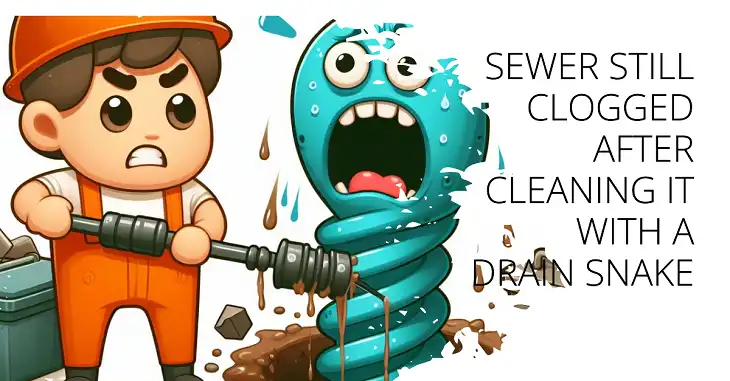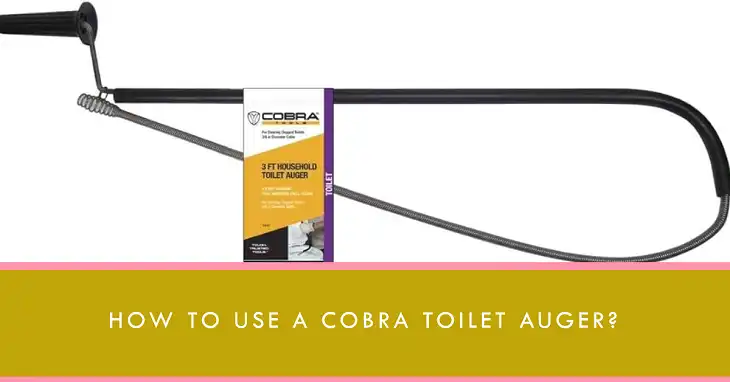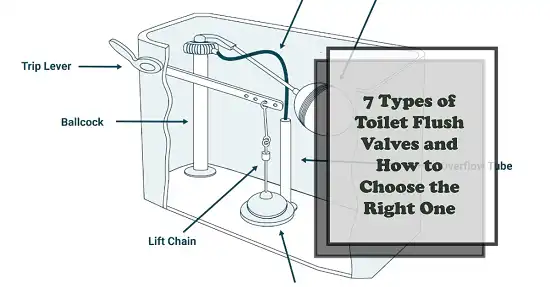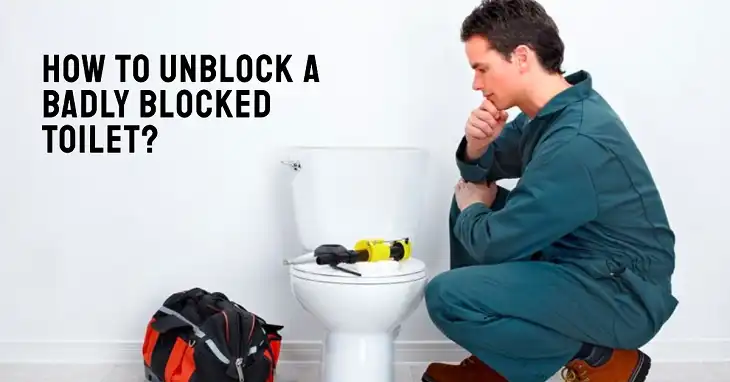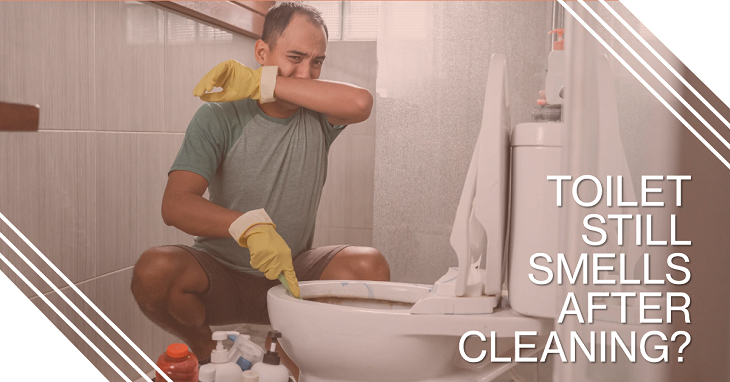How Do I Fix A Noisy Ceramic Disc Faucet?
Is your ceramic disc faucet screaming, whistling, or chattering when you turn it on or off? Don’t worry – you’re not alone. These ear-shattering noises can turn a simple task like washing your hands into an irritating ordeal.
While ceramic disc faucets are known for their reliability and smooth operation, they’re not immune to the occasional noisy outburst. The good news is that in most cases, you can silence that racket without calling a professional plumber.
Whether it’s debris in the waterline, worn discs, or just high-water pressure throwing a tantrum, we’ll walk you through the common causes and fixes for noisy ceramic disc faucets.
With a little DIY know-how and some simple tools, you’ll be able to restore peace and quiet to your kitchen or bathroom. So, let’s dive in and turn down the volume on that troublesome tap!

Common Causes of Noisy Ceramic Disc Faucets
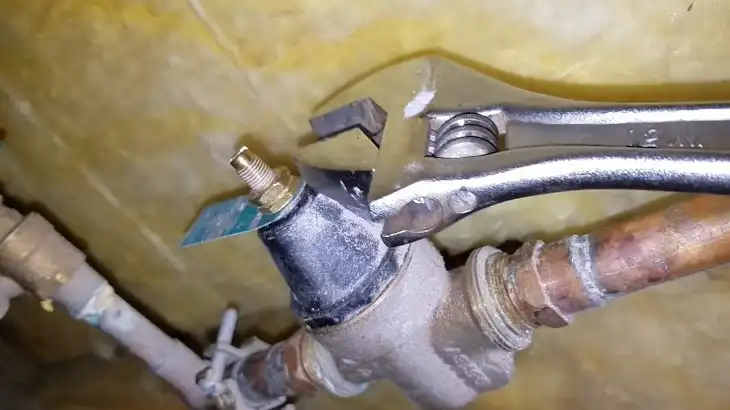
When your peaceful home is suddenly interrupted by a noisy faucet, it’s time to play detective. Let’s dive into the most common culprits behind those annoying sounds.
1. Debris in the Water Line
Ever heard of a tiny pebble causing a big ruckus? That’s exactly what can happen in your faucet. Here’s what you need to know:
- What’s the deal? Bits of sand, rust, or mineral deposits can sneak into your water lines.
- The problem: These tiny troublemakers can get stuck in your ceramic disc cartridge.
- The result: As water rushes past, these particles create turbulence and noise – think of it like a whistle, but much less musical.
Why it happens: Over time, pipes can corrode or mineral buildup can occur, especially in areas with hard water. Sometimes, construction or repairs in your area can stir up debris in the main water lines.
Pro tip: If you notice this issue after work has been done on local water mains, run all your taps for a few minutes to flush out any debris before it causes problems.
2. Worn or Damaged Ceramic Discs
Ceramic discs are the unsung heroes of modern faucets, but even they have their limits.
The lifecycle of ceramic discs:
- New and smooth: Water flows silently and effortlessly.
- Years of use: Microscopic wear and tear begins.
- Trouble starts: Imperfections allow water to flow where it shouldn’t.
Signs of wear:
- Inconsistent water flow
- Difficulty in adjusting temperature
- Dripping when the faucet is off
Why it matters: When ceramic discs wear unevenly or develop tiny cracks, water can squeeze through gaps it shouldn’t. This irregular flow is often the source of whistles, squeaks, or other unwanted sound effects.
3. Loose Parts Within the Faucet
Your faucet is like a tiny, well-orchestrated machine. When one part starts dancing to its own beat, the whole performance can go off-key.
Common loose culprits:
- Washers
- O-rings
- Screws
- Cartridge housing
The domino effect: One loose part can cause others to vibrate sympathetically, amplifying the noise. It’s like one rowdy audience member starting a wave – soon, the whole section is moving!
Listen closely: Loose parts often create a distinctive rattling or chattering sound, especially when you turn the faucet on or off.
4. High Water Pressure
Sometimes, your pipes are just too eager to deliver that H2O. While high water pressure might seem like a luxury, it can actually cause a host of problems.
The noise factor:
- Water rushing at high speeds can create vibrations in the faucet.
- These vibrations often translate to a humming or whistling noise.
- In severe cases, you might even hear a banging in your pipes (water hammer).
Other signs of high water pressure:
- Leaky faucets or pipes
- Shortened lifespan of water-using appliances
- Splashing water when you turn on taps
The numbers game: Ideal water pressure ranges from 40 to 60 psi. Anything consistently above 80 psi is considered high and can lead to problems.
Quick check: You can buy a simple water pressure gauge that attaches to an outside spigot to test your home’s water pressure.
Diagnosing the Noisy Ceramic Disc Faucet Problem
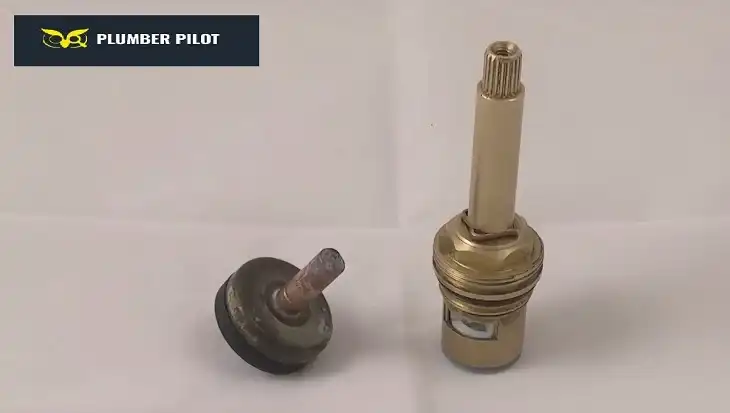
Now that we know the usual suspects, let’s learn how to identify which one is causing trouble in your home.
Identifying the Type of Noise
Your faucet might not be able to speak, but the noises it makes can tell you a lot about what’s wrong. Let’s break down the sound effects:
1. Whistling
- What it sounds like: A high-pitched, consistent tone.
- Likely culprits:
- Debris in the water line
- Worn ceramic discs
- High water pressure
- Why it happens: Water is being forced through a small opening, creating a whistle-like effect.
2. Chattering or Rattling
- What it sounds like: A rapid-fire tapping or vibrating noise.
- Probable causes:
- Loose parts within the faucet
- Rapid changes in water pressure
- The mechanics: Loose components are literally rattling around inside your faucet as water flows through.
3. Squeaking or Screaming
- What it sounds like: A high-pitched squeal or screech.
- Usual suspects:
- Worn ceramic discs
- Damaged cartridge
- The science: Ceramic surfaces are grinding against each other or other parts of the cartridge, creating friction and noise.
4. Humming
- What it sounds like: A low, consistent vibrating sound.
- Most common cause: High water pressure
- What’s happening: The excessive pressure is causing the entire faucet or even your pipes to vibrate.
When the Noise Occurs
The timing of the noise can be just as telling as the type of noise. Here’s a breakdown of what different timings might indicate:
1. Noise When Turning On the Faucet
- What it means: This could point to high water pressure or debris that’s dislodged when water first rushes in.
- Listen for: A sudden whistle or rattle that settles after a few seconds.
- Why it happens: The initial surge of water can dislodge debris or cause loose parts to rattle before the flow stabilizes.
2. Noise During Use
- What it indicates: Worn discs, a problem with water pressure, or debris caught in the aerator.
- Characteristics: The noise is consistent while water is flowing.
- Troubleshooting tip: Try removing and cleaning the aerator. If the noise persists, the issue is likely internal.
3. Noise When Turning Off the Faucet
- What it suggests: Often related to loose parts or water hammer.
- What to listen for: A rattling that continues briefly after the water stops, or a loud ‘thunk’ in your pipes.
- The mechanics: Water hammer occurs when the flow of water is suddenly stopped, causing a pressure wave in the pipes.
4. Intermittent Noise
- What it could mean: Fluctuating water pressure or debris that moves around in the system.
- Characteristics: The noise comes and goes without a clear pattern.
- Why it’s tricky: Intermittent noises can be the hardest to diagnose because they’re not always present when you’re trying to troubleshoot.
Pro Tip: When trying to diagnose your noisy faucet, it can be helpful to video record the sound with your smartphone. This can be particularly useful if you need to consult with a plumber or if the noise is intermittent.
Step-by-Step Fixes for Noisy Ceramic Disc Faucets
When faced with a noisy ceramic disc faucet, several remedies can be employed. These solutions range from simple maintenance tasks to more involved repairs. Let’s explore each option in detail.
Method 1: Flushing the System
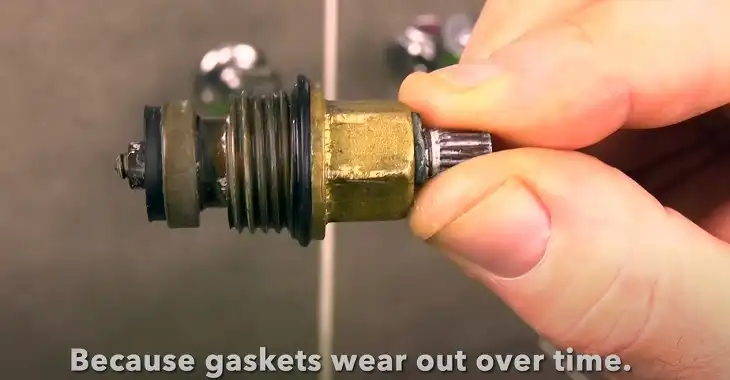
Flushing the system is often the first and simplest step in addressing faucet noise issues.
- Remove the aerator from the faucet spout. This component is typically screwed onto the end of the spout and can be removed by hand or with pliers if necessary.
- Inspect the aerator for debris or mineral buildup. Clean it thoroughly if any deposits are present.
- With the aerator removed, turn on both hot and cold water at full force for approximately 2-3 minutes. This process helps dislodge and flush out any loose debris in the water lines.
- Reattach the clean aerator and test the faucet operation.
This method is particularly effective for addressing noises caused by minor debris in the water line.
Method 2: Cleaning the Ceramic Cartridge
If flushing the system doesn’t resolve the issue, the next step is to clean the ceramic cartridge.
- Shut off the water supply to the faucet. This is typically done using shut-off valves located under the sink.
- Remove the faucet handle and trim to access the cartridge. The exact process may vary depending on the faucet model.
- Extract the cartridge carefully, noting its orientation for reinstallation.
- Soak the cartridge in a solution of equal parts white vinegar and water for several hours. This helps dissolve mineral deposits.
- Rinse the cartridge thoroughly and reinstall it, ensuring proper orientation.
- Reassemble the faucet and test its operation.
This process can often resolve issues related to mineral buildup or minor wear on the ceramic discs.
Method 3: Replacing the Ceramic Cartridge
If cleaning doesn’t resolve the issue, replacement of the cartridge may be necessary.
- Follow steps 1-3 from the cleaning process to access and remove the cartridge.
- Take the old cartridge to a plumbing supply store to ensure an exact match for the replacement.
- Install the new cartridge, paying close attention to proper orientation.
- Reassemble the faucet and test for proper operation.
Cartridge replacement can address issues stemming from significant wear or damage to the ceramic discs.
Method 4: Adjusting Water Pressure
High water pressure can be a source of faucet noise and other plumbing issues.
- Test your home’s water pressure using a pressure gauge attached to an outdoor spigot. Optimal pressure typically ranges from 40 to 60 psi.
- If pressure exceeds 80 psi, consider installing a pressure reducing valve. This task often requires professional assistance.
- For a temporary solution, the main shut-off valve to the home can be partially closed to reduce overall system pressure.
Proper water pressure management can alleviate noise issues and prevent future plumbing problems.
Preventive Maintenance
Implementing a preventive maintenance routine can help avoid future faucet noise issues and extend the life of your plumbing fixtures.
1. Regular Cleaning
Establish a routine cleaning schedule for your faucets:
- Clean aerators every 3-6 months to prevent debris buildup.
- Wipe down faucet exteriors regularly to prevent mineral deposit accumulation.
- Perform a system flush annually to clear minor debris from water lines.
2. Water Softening Systems
In areas with hard water, a water softening system can provide significant benefits:
- Reduces scale buildup in pipes and fixtures.
- Extends the lifespan of water-using appliances.
- Improves overall water quality for household use.
While installation requires an initial investment, the long-term benefits often outweigh the costs in terms of reduced maintenance and extended equipment life.
3. Pressure Regulators
Installing a pressure regulator offers several advantages:
- Maintains consistent, safe water pressure throughout the plumbing system.
- Reduces wear on pipes, fixtures, and appliances.
- Can lead to water conservation and lower utility bills.
For homes without a pressure regulator, installation by a licensed plumber is recommended to ensure proper function and integration with the existing plumbing system.
When to Call a Professional
While many faucet issues can be resolved through DIY methods, certain situations warrant professional attention. Knowing when to call in an expert can save you time, money, and further damage to your plumbing system.
Persistent Noise After Attempting All DIY Solutions
If you’ve tried all the recommended DIY methods and the noise persists, it’s time to call a professional. Persistent noise can indicate deeper issues that require expert attention.
Visible Damage to the Faucet Body or Internal Components
Any visible cracks, corrosion, or damage to the faucet body or internal parts should be handled by a professional to prevent further damage or leaks.
Sudden Changes in Water Pressure Affecting Multiple Fixtures
A sudden drop or spike in water pressure affecting multiple fixtures could indicate a serious plumbing issue. A professional can diagnose and fix the problem efficiently.
Signs of Water Leakage Around the Faucet Base or Under the Sink
Water leakage, whether around the faucet base or under the sink, is a clear sign that you need professional help. Ignoring leaks can lead to water damage and mold growth.
Discolored Water Indicating Potential Pipe Corrosion
If your water is discolored, it could indicate pipe corrosion or other serious issues. A professional plumber can determine the cause and recommend appropriate solutions.
Final Words
In conclusion, addressing a noisy ceramic disc faucet promptly can restore peace and functionality to your kitchen or bathroom. While several factors can contribute to the noise, the most common culprit is often debris trapped within the ceramic cartridge.
By regularly cleaning and maintaining your faucet, using water softening systems to reduce mineral buildup, and installing pressure regulators to stabilize water flow, you can mitigate these issues and extend the lifespan of your faucet.
Remember, if DIY fixes don’t resolve the problem or if you notice signs of damage like persistent leaks or unusual noises, it’s wise to consult a professional plumber. Their expertise and specialized tools can diagnose underlying issues and ensure your faucet operates smoothly for years to come.
FAQs
1. How Do I Stop My Faucet From Making Noise?
If your faucet is making noise, such as whistling or chattering, a common fix is to replace the aerator. Sediment or debris can accumulate in the aerator, causing irregular water flow and noise. Installing a new aerator can restore smooth water flow and eliminate the noise.
2. Can You Use WD-40 On A Stiff Tap?
Yes, to loosen a stiff tap, WD-40 Multi-Use Product is effective. It helps lubricate the internal components of the tap, making it easier to turn. Apply WD-40 sparingly to avoid residue buildup and ensure smooth operation of your tap.
3. Why Does My Tap Make A Loud Noise When I Turn It On?
A tap making a loud noise when turned on is often due to loose connections. Check the connections under the sink to ensure they are securely tightened. Loose connections can cause vibrations and noise when water flows through the pipes, which can be resolved by tightening fittings.
4. Why Does My Faucet Rumble?
A rumbling faucet can indicate several issues, including loose pipes, water hammer, or problems with your home’s water pressure. Inspect the pipes under the sink for any loose connections or vibrations.
Water hammer occurs when water abruptly stops or changes direction, causing pipes to vibrate and make noise. Adjusting water pressure or installing a water hammer arrestor can help alleviate this issue.
5. Why Is My Outside Faucet So Loud?
The most common cause of a noisy outdoor faucet is faulty washers. Over time, washers can wear out or become misaligned, causing vibrations and noise when the faucet is turned on or off. Replacing the washers with new ones designed for outdoor faucets can often resolve this issue and restore quiet operation.
6. Why Does My Faucet Make A High-Pitched Sound?
If your faucet emits a high-pitched sound, check the pressure from the shut-off valve supplying water to the faucet. High water pressure can cause vibrations and noise within the plumbing system, resulting in a high-pitched sound.
Adjusting the shut-off valve to reduce water pressure or installing a pressure regulator can help alleviate this issue and prevent potential damage to your plumbing.
7. Why Does My Faucet Make A Groaning Noise?
A groaning noise from your faucet is often due to air trapped in the pipes. When air pockets move through the pipes, they can create vibrations and sounds resembling a groan.
To resolve this, turn on the affected faucet and let it run for a few minutes to flush out the air. If the groaning persists, check for any loose pipes or fittings that may need tightening to eliminate the noise.

